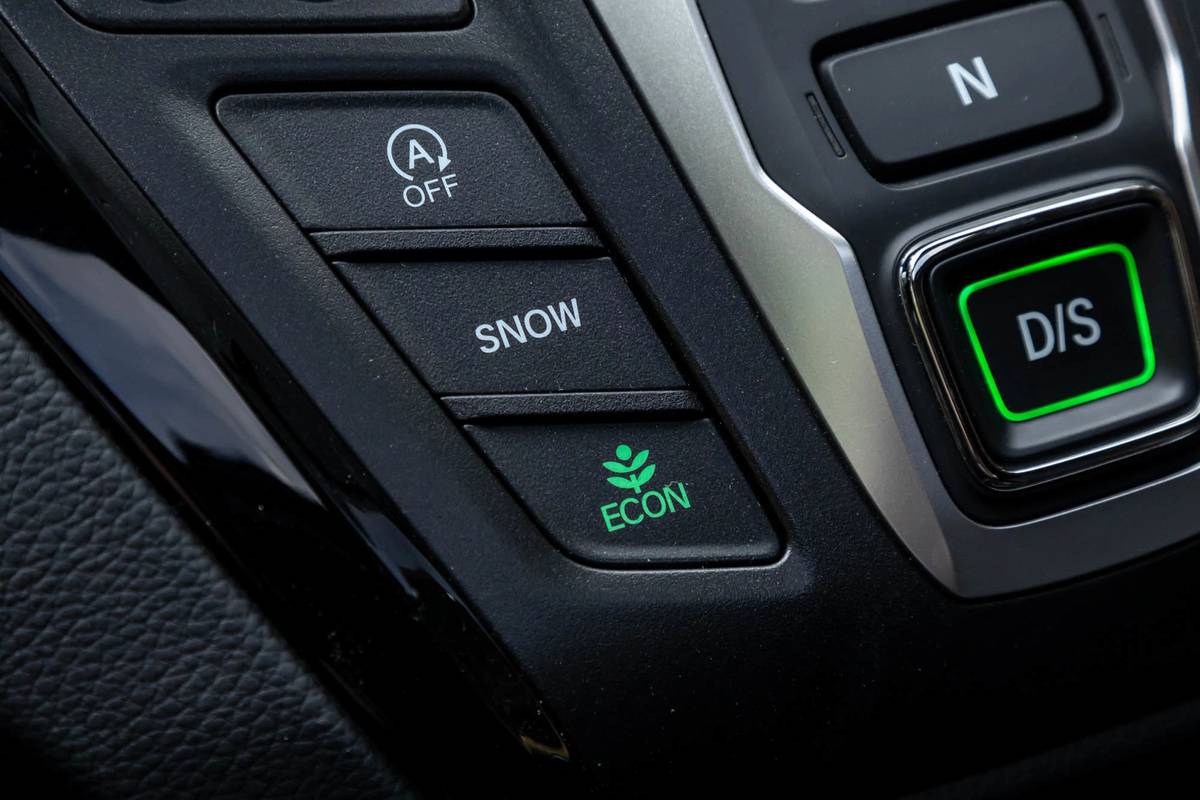What Is Eco Mode?


The Eco mode (or Econ on some vehicles) is a fuel-saving feature offered by several manufacturers that instructs the engine computer to shift into a program that maximizes efficiency over performance.
Related: What Are the Most Fuel-Efficient Cars for 2021?
This mode is generally engaged by an interior switch. Details of Eco modes differ by brand, though in general, they try to squeeze a few more miles out of each gallon of gas by reducing throttle response, shifting the transmission to higher gears sooner and, depending on the vehicle, invoking other fuel-saving measures.
Among the brands that have offered Eco or Econ modes are Chevrolet, Ford, Honda, Hyundai, Kia, Lexus, Toyota and Volvo, though they aren’t found on all current vehicles from those brands. In addition to an Eco mode, some vehicles offer other settings that adjust engine and transmission performance to other priorities, such as Normal and Sport, and may also adjust steering and suspension feel.
System Similarities
Depending on the vehicle, someone who drives with a light throttle foot might not feel much difference in Eco mode. More aggressive drivers will probably notice that acceleration is leisurely, passing response muted and that the transmission isn’t as responsive.
When Eco is engaged, acceleration will feel slower when pressing the throttle pedal down compared to when it is off. An automatic transmission will shift to higher gears sooner in Eco mode and be slower to downshift for passing.
System Differences
Some systems manage other vehicle operations to improve efficiency. For example, Honda’s Econ mode also reduces use of the air-conditioning compressor so the engine doesn’t have to work as hard. In addition, Honda’s system manages cruise control operation on automatic-transmission models to restrict downshifting, so the transmission might not shift to a lower gear when climbing a hill.
Toyota’s Eco mode on some models also reduces the amount of energy used for heating and cooling as well as seat heaters. Some other systems shut off fuel delivery when the driver lifts off the gas pedal and coasts. Volvo’s system disengages the engine from the transmission when the vehicle is coasting and reduces engine speed to idle speed.
Do They Really Improve MPG?
Most manufacturers don’t put a number on projected savings, though Ford claimed that following its EcoMode driving guidelines could improve fuel economy on a 2012 Focus by as much as 24%. Hyundai used to claim that its Active Eco system improved fuel economy up to 7%.
However, any gains from using an Eco system are likely to be small. The benefits can be easily erased by aggressive driving, such as jackrabbit starts when a traffic signal turns green or zipping around other cars and frequently braking in the Rush Hour Grand Prix.
Whether a vehicle has an Eco mode or not, judicious driving can achieve some of the same results. A light foot on the gas pedal, coasting when possible and reducing the number of times a transmission downshifts through gradual acceleration will keep the engine in an economical mode more often.
More From Cars.com:
- What’s the ‘L’ in Your Shifter and When Should You Use It?
- What Is a Collision Damage Waiver?
- What Is a Headliner?
- How Does a Car Defroster Work?
- What Does AFS Mean?
Cars.com’s Editorial department is your source for automotive news and reviews. In line with Cars.com’s long-standing ethics policy, editors and reviewers don’t accept gifts or free trips from automakers. The Editorial department is independent of Cars.com’s advertising, sales and sponsored content departments.

Contributor Rick Popely has covered the auto industry for decades and hosts a weekly online radio show on TalkZone.com.
Featured stories




